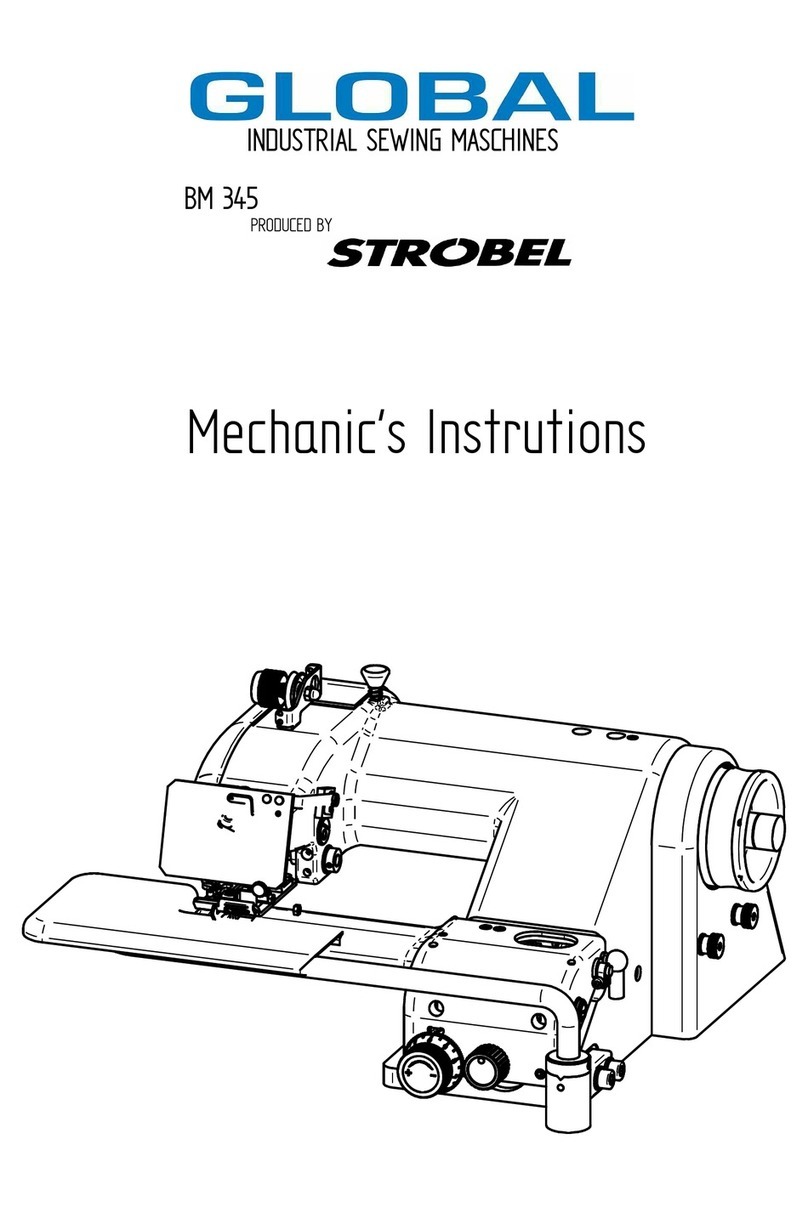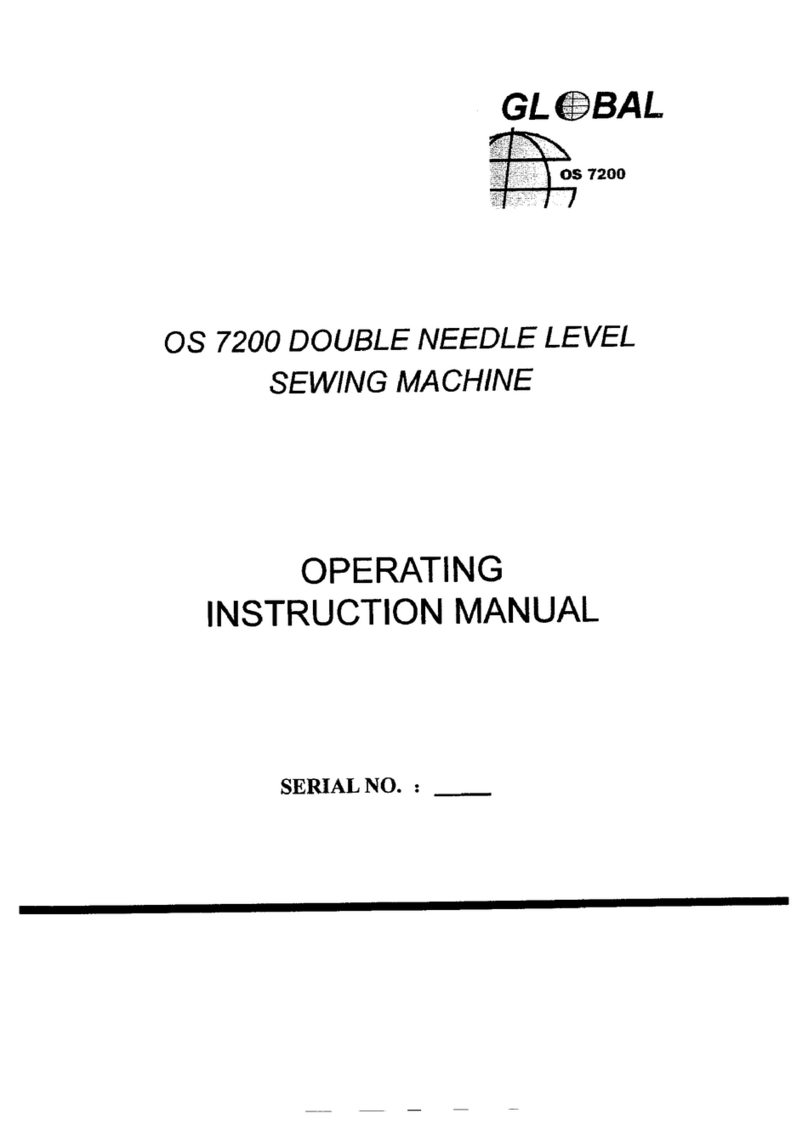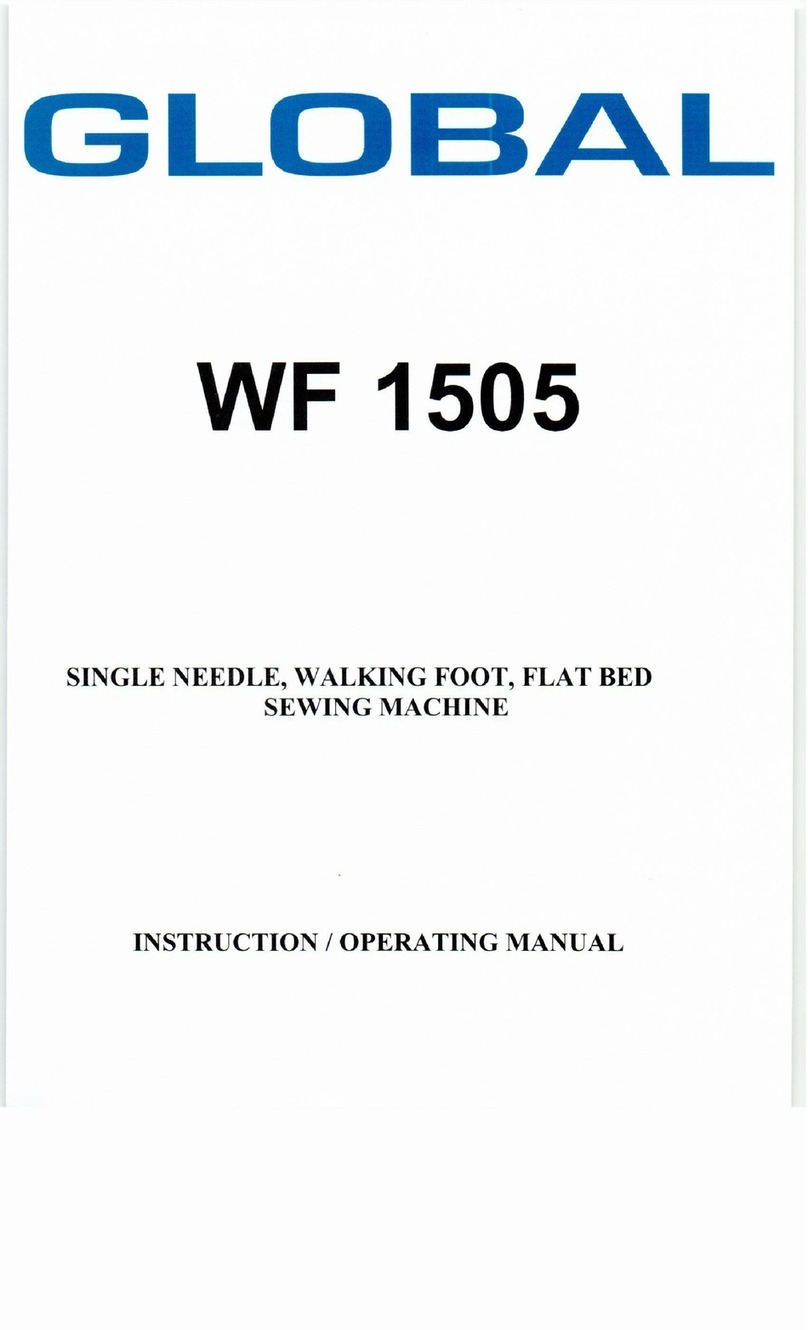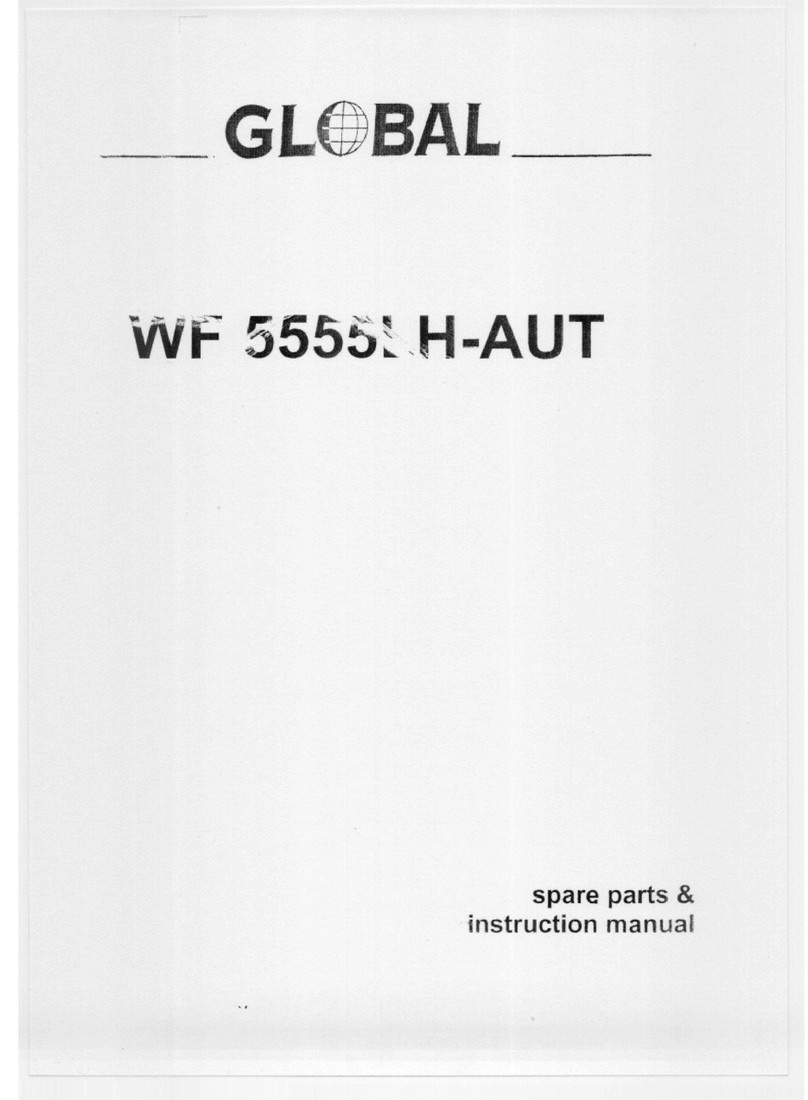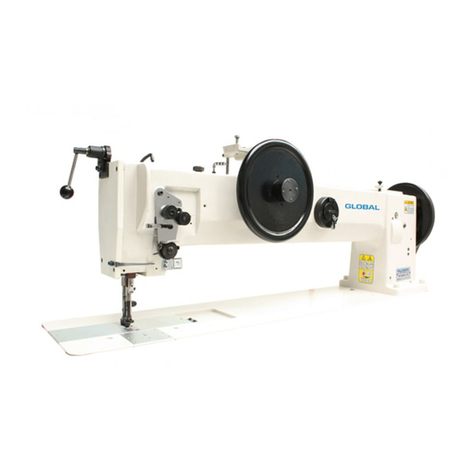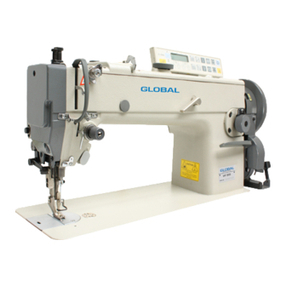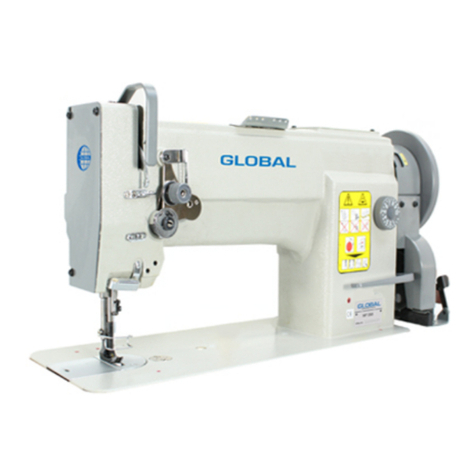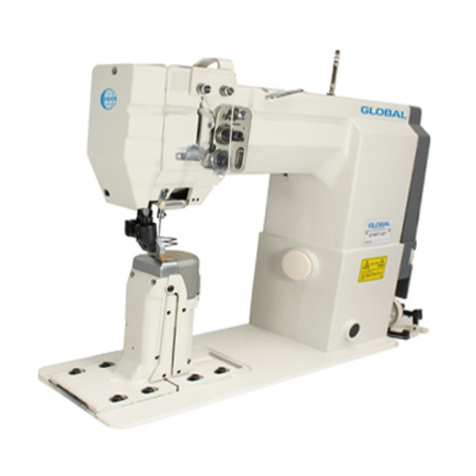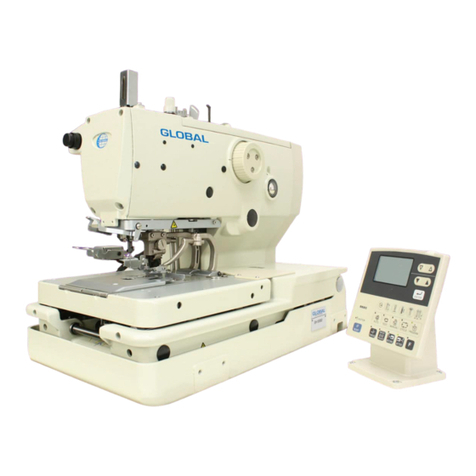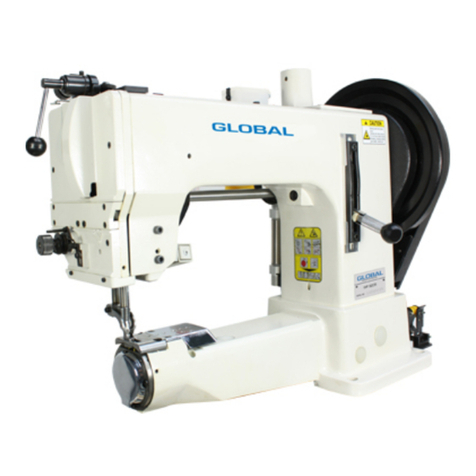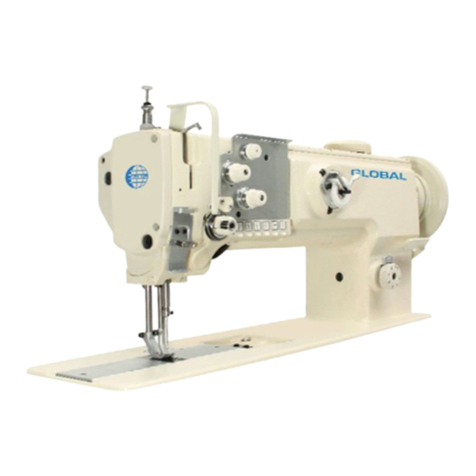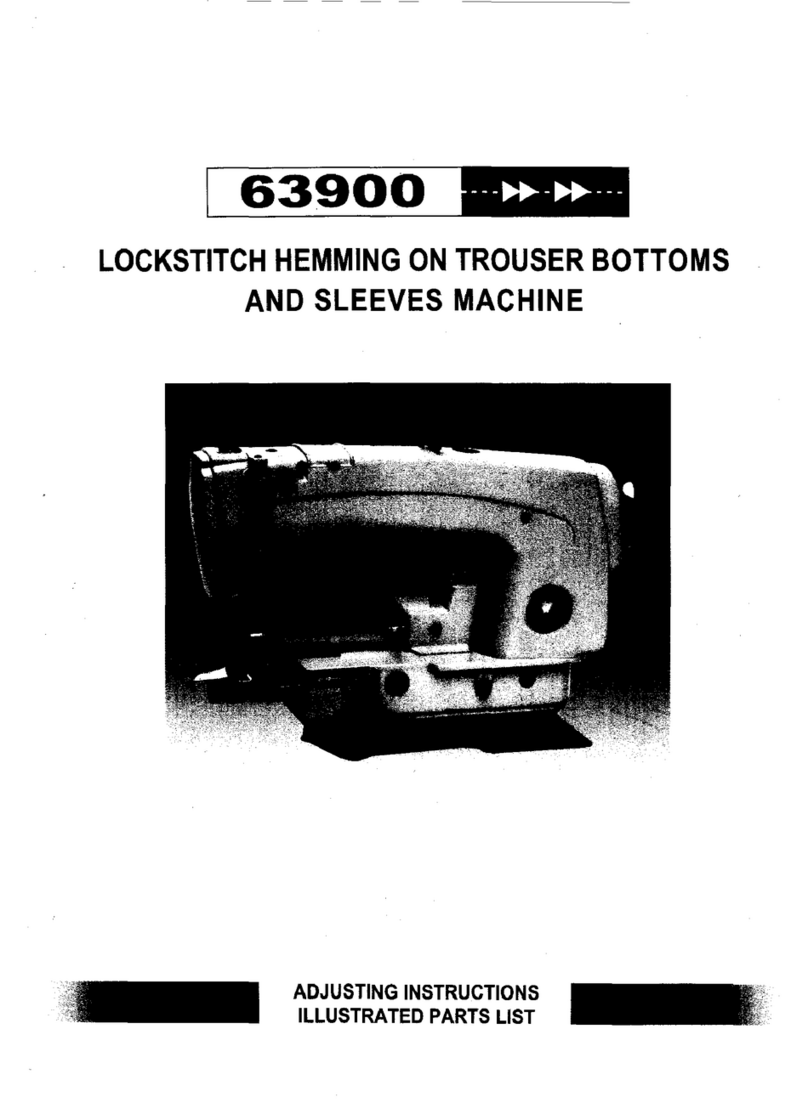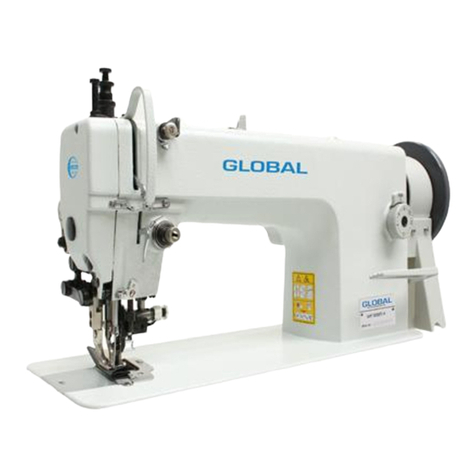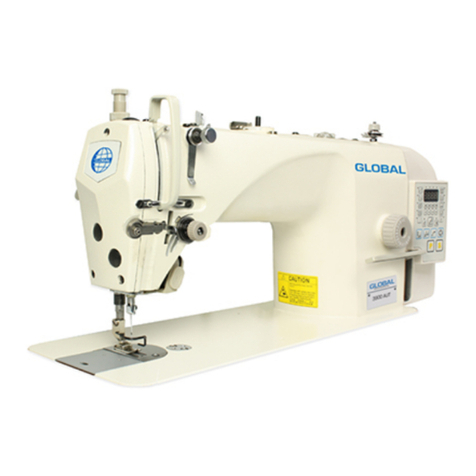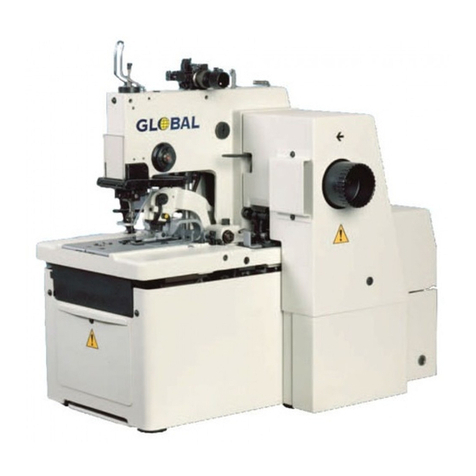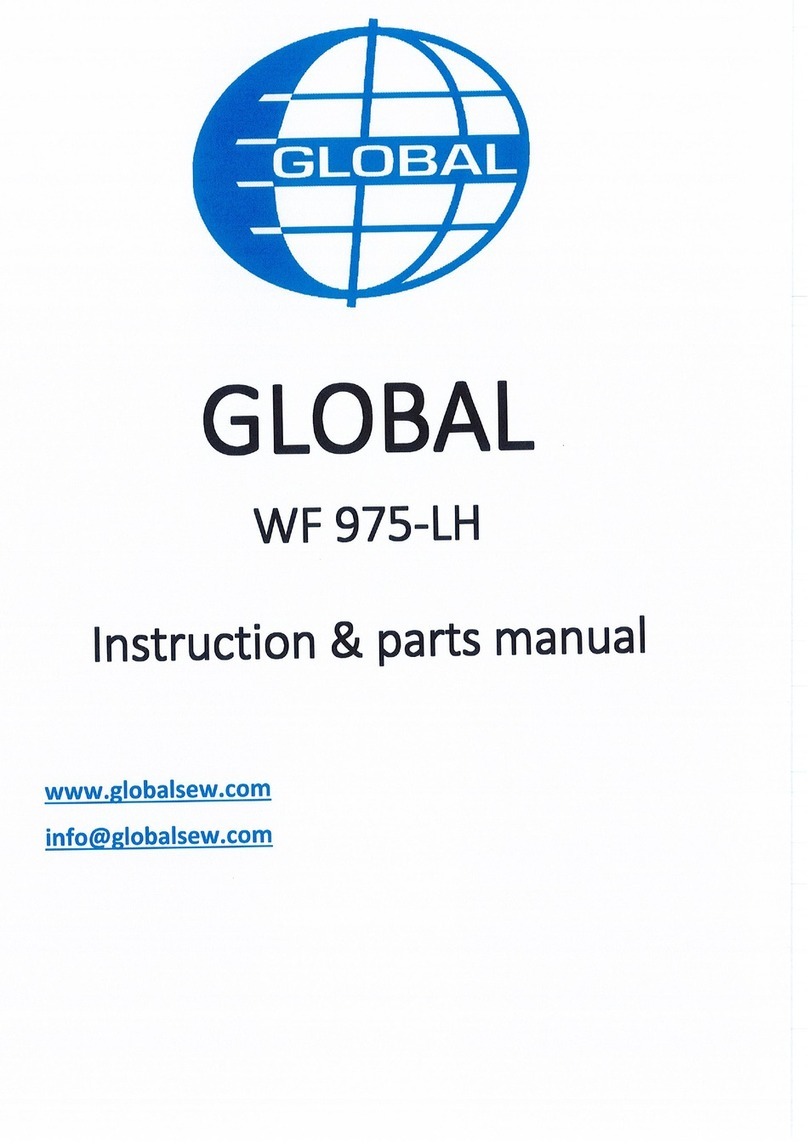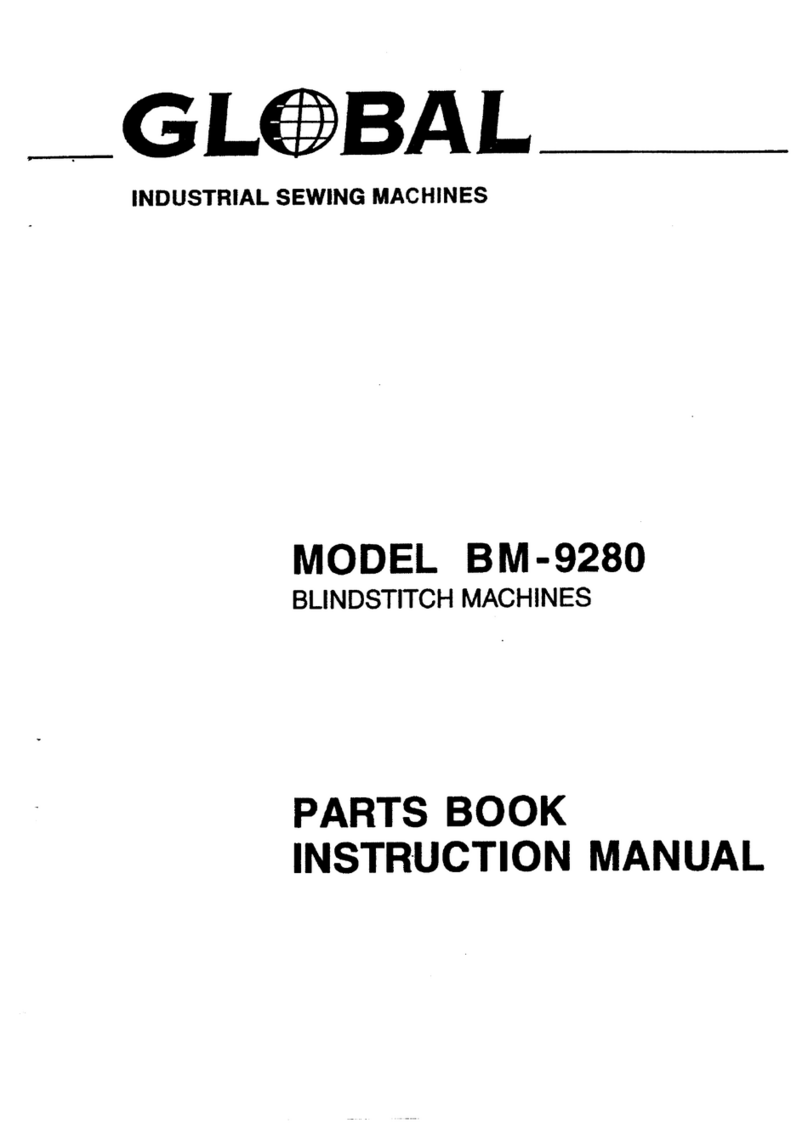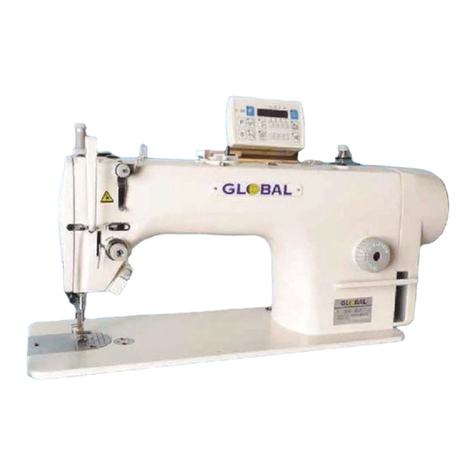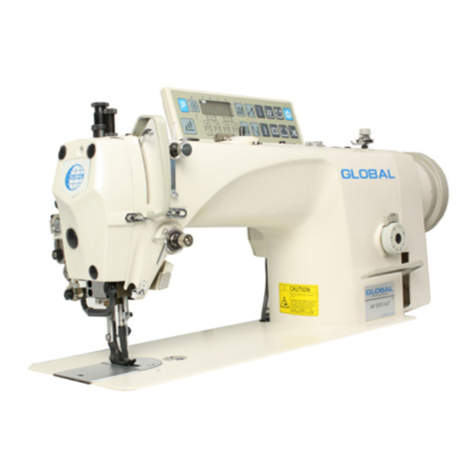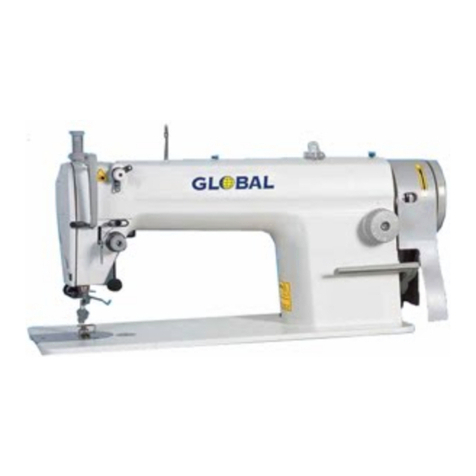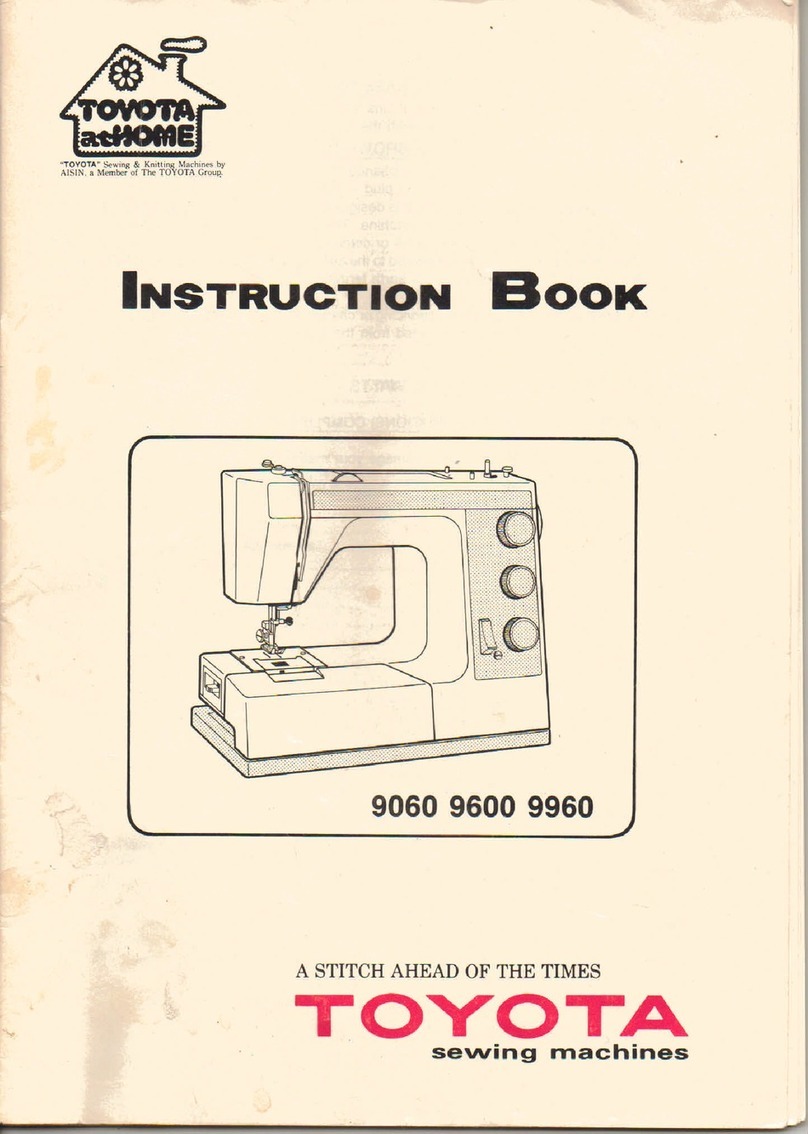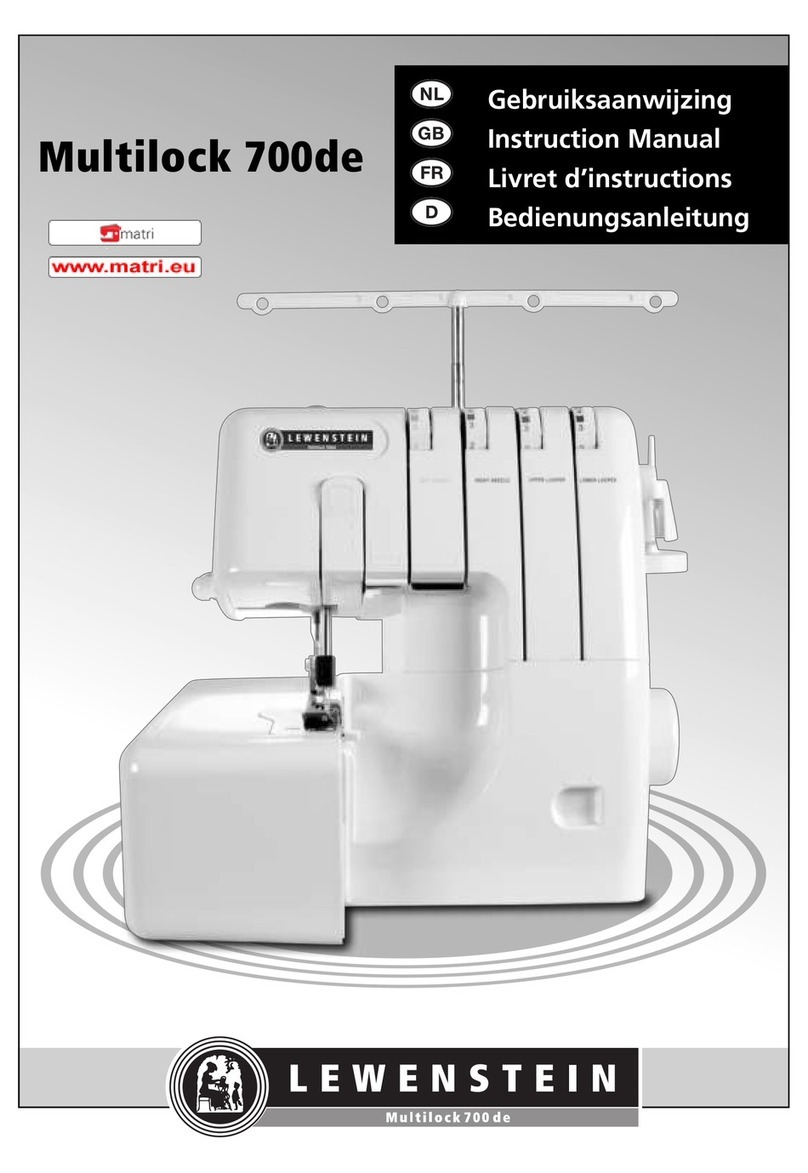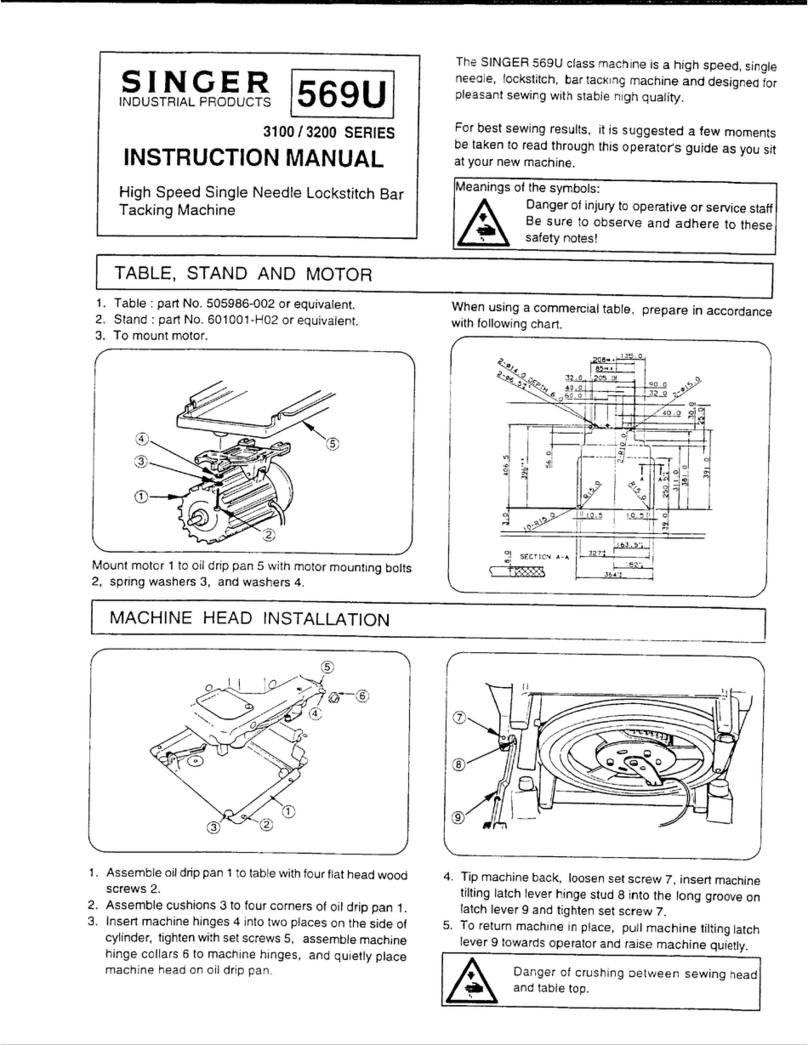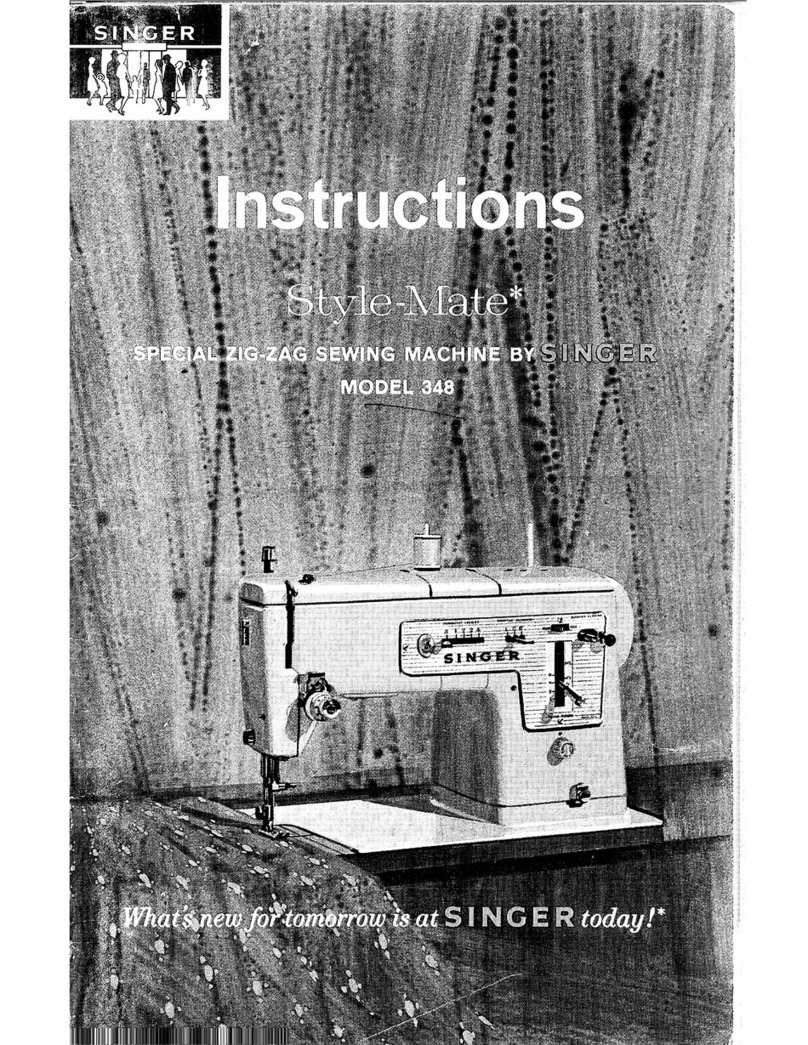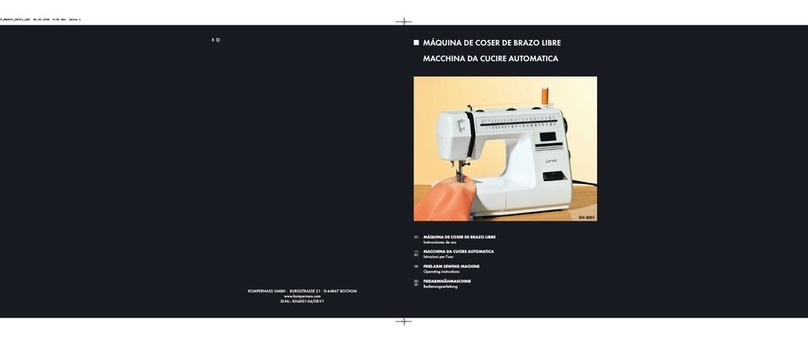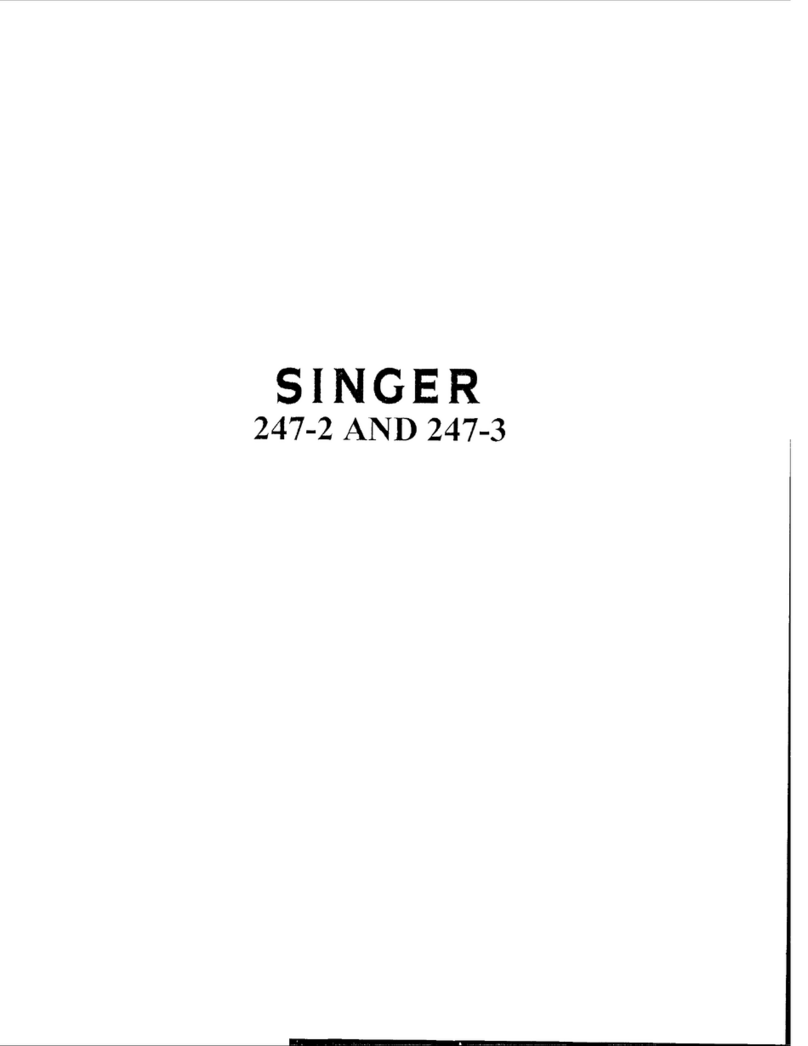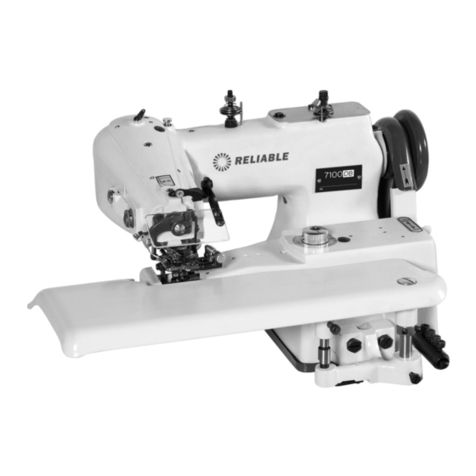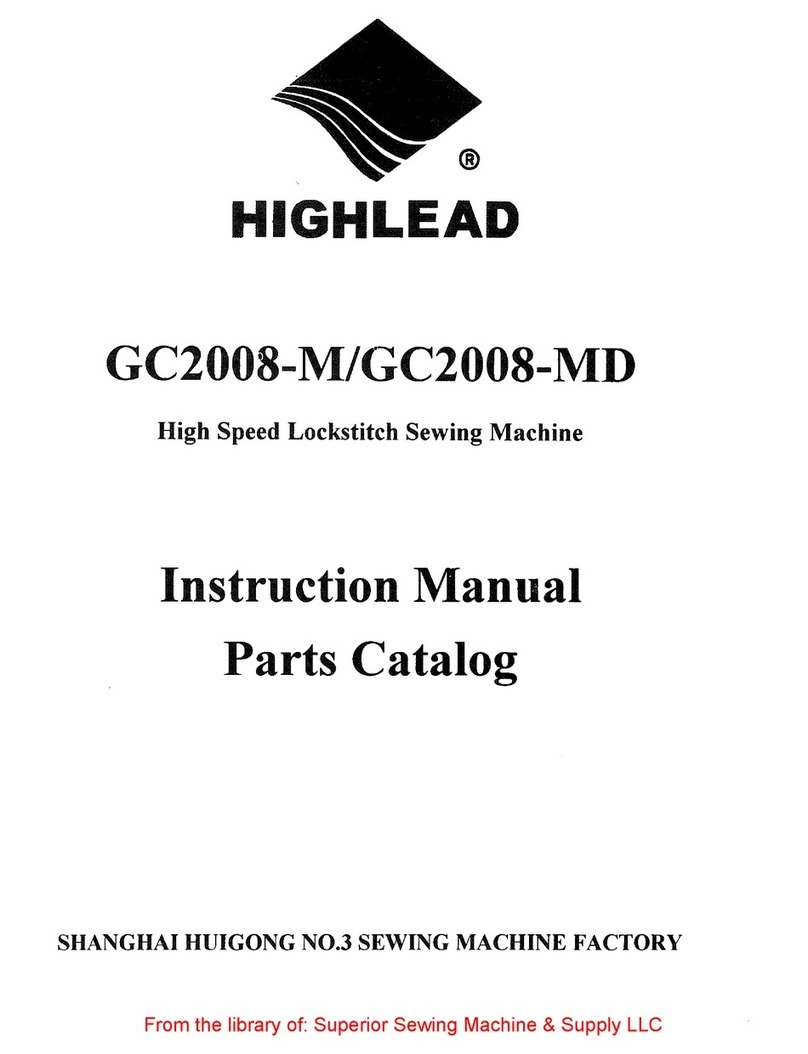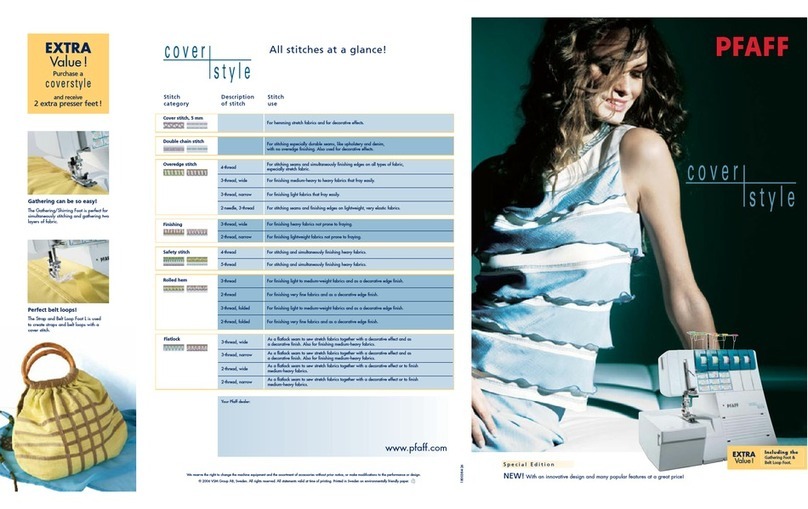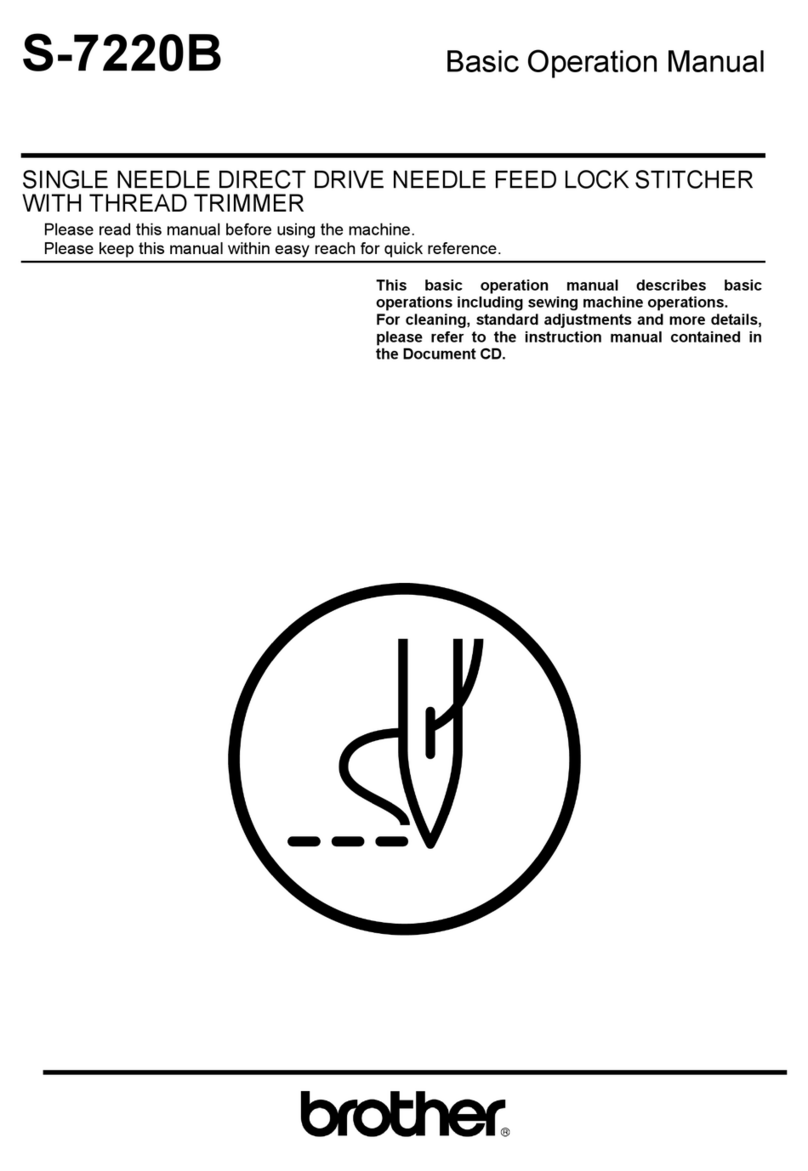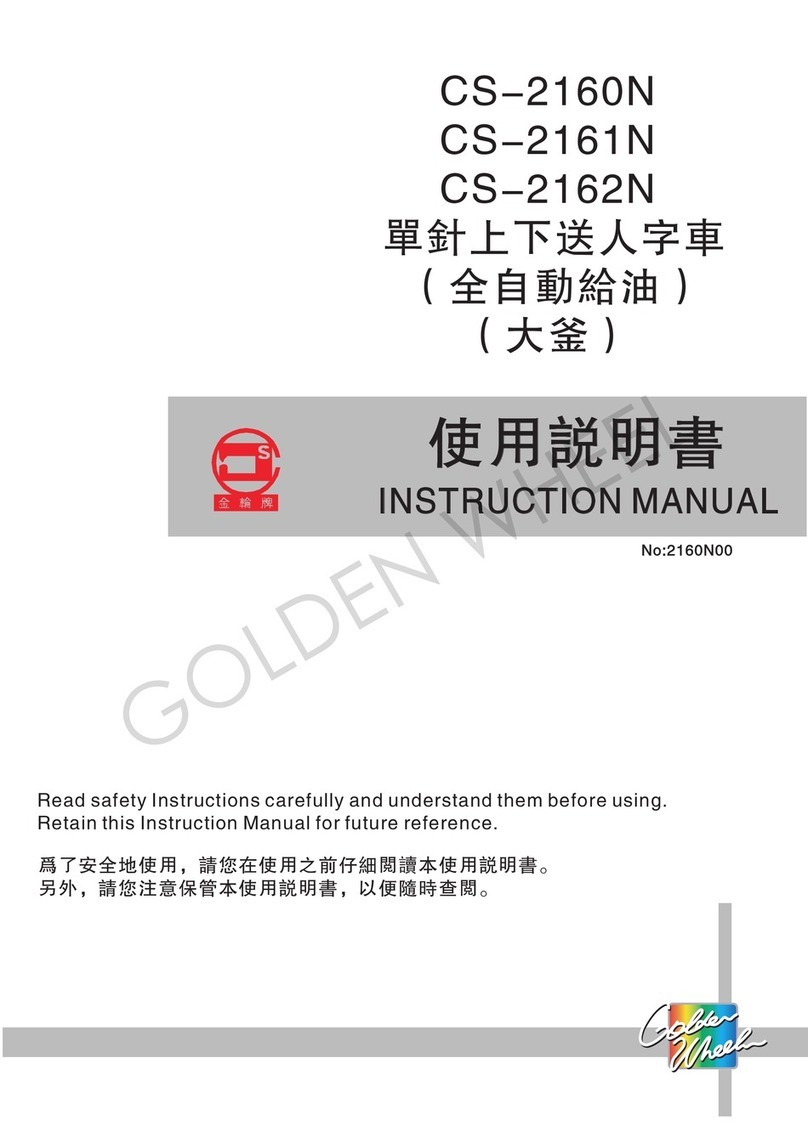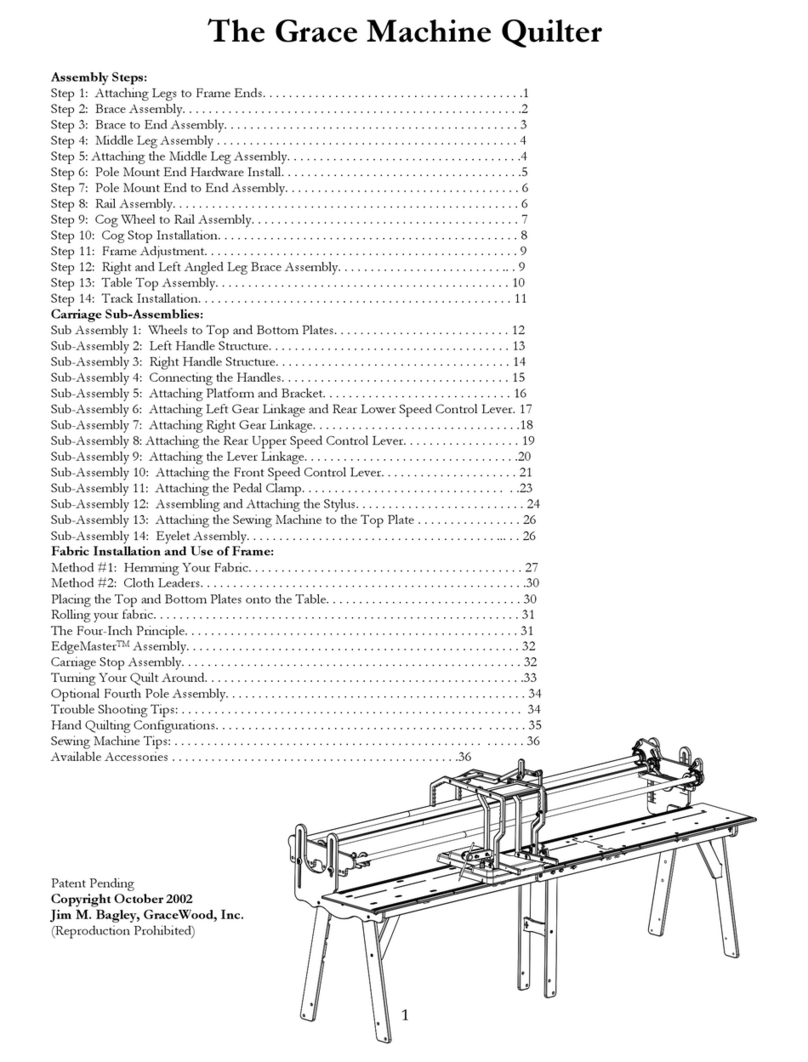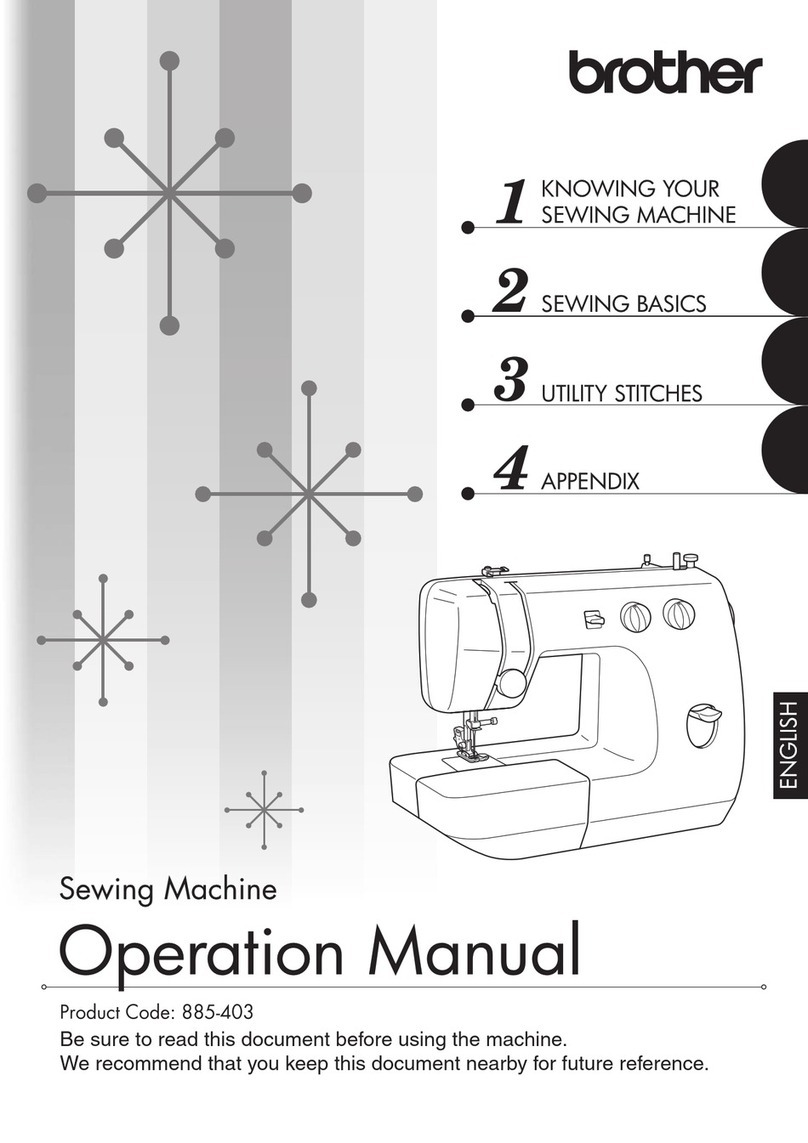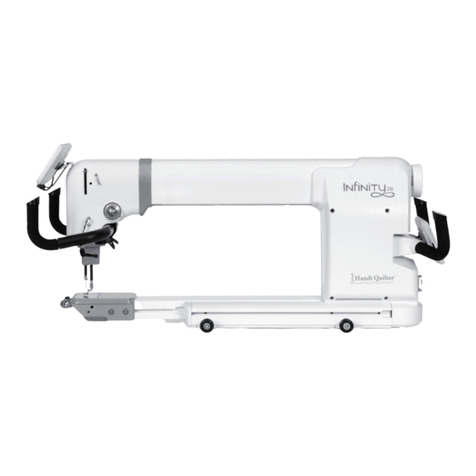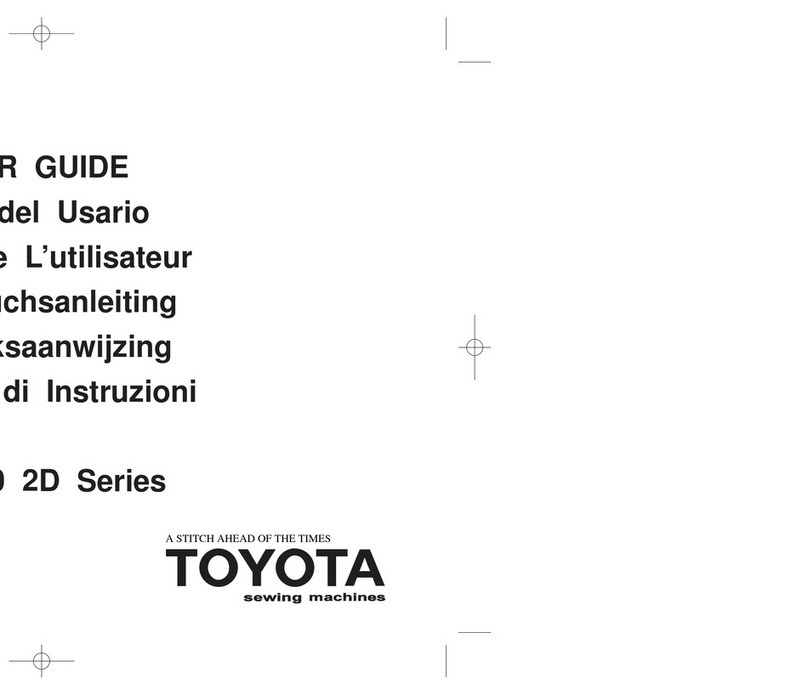
15) Needle barstop position (left & right) (Fig.19):
A Stop the motion
of
left-side needle bar:
Make the stopper wrench
to
theposition L
B Stop the motion
of
right-sideneedle bar:
Make the stopperwrenchto the position R
C Two needles running
at
the same time:
Return the needle
bar
of
left orrightfrom standstill to
running: Press down restore plate, stopper
wr
ench
restore to O position automatically
16) Walking foot and presserfoot vertical stroke
adjustment (Fig.23):
Whenfabric with large elasticity is sewn, orwhen thickness
of
fabric changes, the vertical stroke (movable range)
of
the
presserfeet should
be
adjusted as follows:
A Loosen the special bolt;
B The vertical strokes
of
presser feet become minimum
when the crank rod is moved downward and set;
·· · C ' The vertical strokes
of
presser feet become m1mmum
when the crankrod is moved upward and set;
D After the adjustment, tighten the special nut.
Special boll Crank
Crankrod
Thevertical strokes of
presser
feet canbe adjusted within a range from 2mm to 6mm.
, ,
17) Relationship between rotating hook motion
and
take-up lever motion (Fig.24)
Fig.22
When the timingbelt (toothed belt) was removed for its replacement, for example, the relationship between·
rotating hook motion and take-up lever motion should
be
adjusted as follows:
A Turn the balance wheel and stop when the take-up lever is
lifted to its upper dead point.
B Lean
the
machine head backward and make sure the arrow
(timing mark)
put
on
the timing beltis in line with the black
line
on
the boss
of
l9wer shaft bearing.
C If
the
timing mark is not in line with the black line, remove
the timing belt and install it again to adjust.
Black
line
on
boss
of
lower
shaft
bearing
Timing
belt
sprocker
18) Relationship between hook motion
and
opener motion (Fig.25)
Tlmlng
mark
Fig
.
24
A
Tum
the balance wheel by hand and stop when the opener hoider is located most remotely
fro·m
the
- 7 -
From the library of Superior Sewing Machine & Supply LLC - www.supsew.com



















